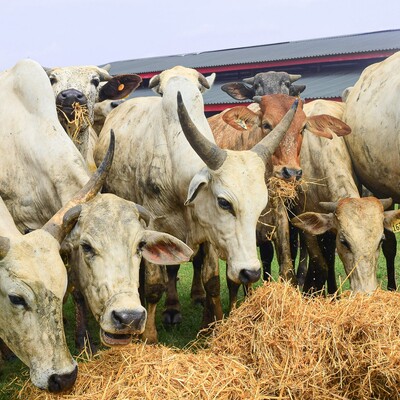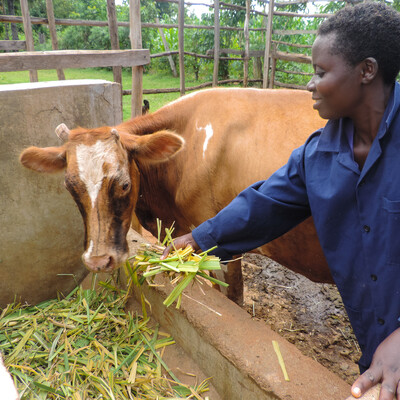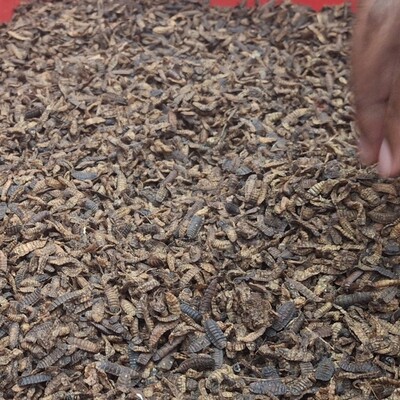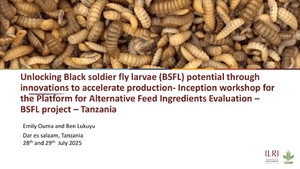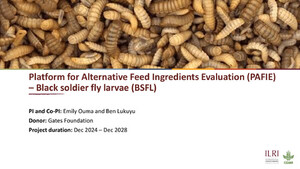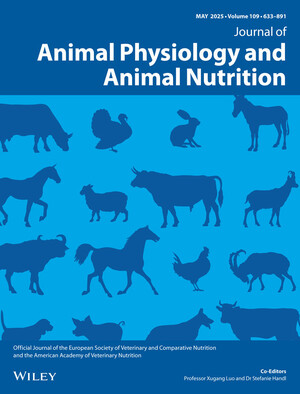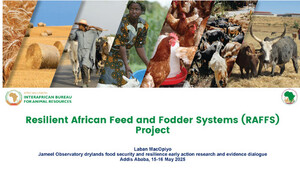
How and why better livestock feeding starts with farmers
Have you ever considered the transformative potential of connection and empowerment in rural communities, particularly when smallholder farmers have access to improved livestock feeding?
Our latest peer-reviewed article on the Feed Assessment Tool (FEAST) shows how improving livestock feeding in marginalized communities through participatory action can be transformational. It describes FEAST and particularly its use in catalysing improved livestock feeding in two large-scale development projects. In the article we also talk about the wider database that builds up from continued application of FEAST in many settings.
So, why is improving livestock feed important?
Smallholder farmers in countries across Africa and Asia almost invariably keep livestock. They provide milk, meat and eggs for the family and for market; they also provide draught power, manure and a way of storing savings. Unfortunately, the feed resources available to these smallholders is often limited, resulting in poorly fed animals. Feeding livestock better has the potential to transform livelihoods and nutrition of the rural poor in these countries.
Improving the amount and quality of feed could double milk and meat yields, and so income. However, implementing effective feed improvement strategies is challenging and progress has been slow. Improved feeding of livestock is not as simple as it first seems. Farmers have many competing demands on their resources, such as land and labour, and may not prioritize feed improvement. Additionally, many proposed feed solutions by development communities require expensive inputs and are difficult to manage. Even seemingly attractive technical solutions often have drawbacks, or a “catch”, that make them unappealing for farmers to adopt.
How can we help farmers navigate the maze of technical solutions?
That's where FEAST comes in.
FEAST is a revolutionary tool used by many communities across 15 countries that puts farmers at the center of the process. By working closely with farmers to understand their needs and challenges, FEAST helps to identify practical and feasible solutions for improving livestock feeding. But FEAST is much more than just a tool. Through the process of applying FEAST, farmers become active participants in finding solutions, building connections with researchers and development professionals, and gaining a deeper understanding of their own farming systems.
Since developing the tool 15 years ago, we have learned that the standardized data collected through FEAST is a precious resource. Detailed data on feeding practices at farm level in Africa and Asia are hard to come by. The FEAST data repository stores this valuable data in a structured way and makes it openly available to researchers for use in training models and gaining a more comprehensive understanding of the whole livestock system.
The impact of FEAST and future research
There are different paths to impact that can be achieved through using FEAST.
First, the direct impact of helping farmers to land on better feed solutions. Second, the impact on researchers’ understanding of farmer realities, which hopefully helps them to develop more useful solutions. And finally, the wider impact of the growing FEAST database through improving models and providing insights at the level of the livestock system.
Our article in the journal Agronomy for Sustainable Development is just the start of our efforts to understand the impact of FEAST . We have ideas for further research in this area and are already pursuing some of these. Stay tuned for a future paper and other exciting developments in this area!
--
Learn more:
- Outcome story: Fodder for thought: FEAST tool helps farmers optimise livestock feed for productivity (Aug 2021)
- Research outputs: FEAST in CGSpace
- Video: Working out how to improve livestock feeding: The FEAST feed assessment tool
- FEAST Global Data Repository: data visualisations
Banner photo: Women farmers in Uttarakhand, India, carry green fodder from dual-purpose wheat for their livestock. Photo ILRI/Sapna Jarial






